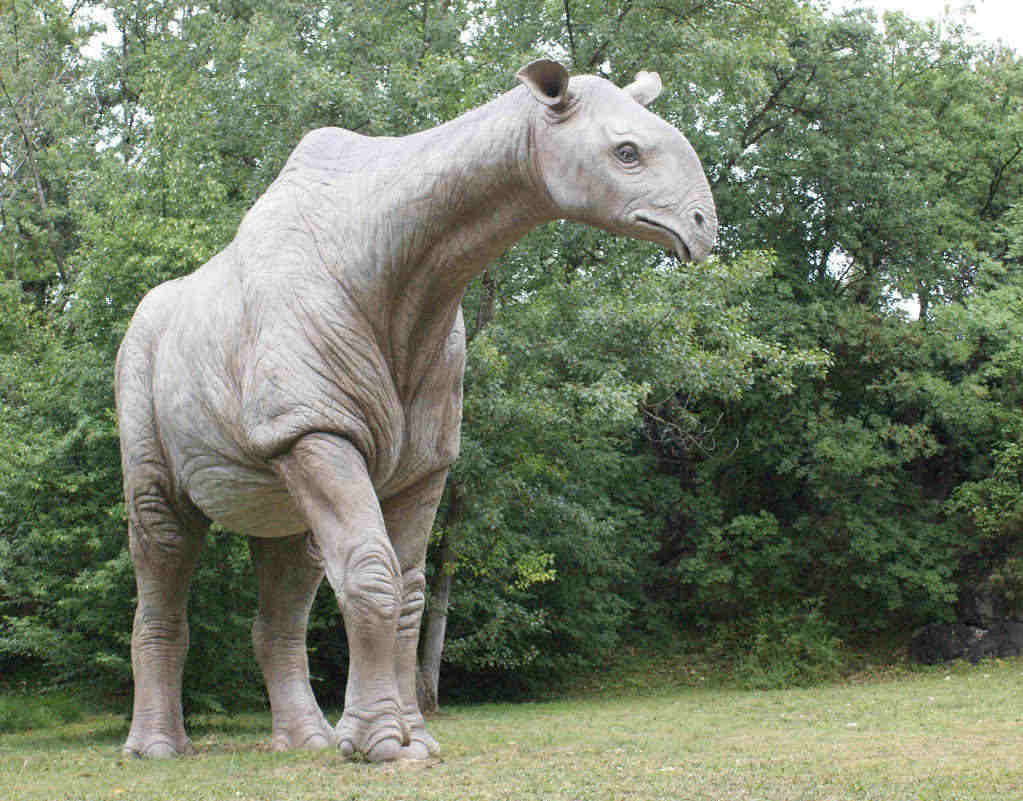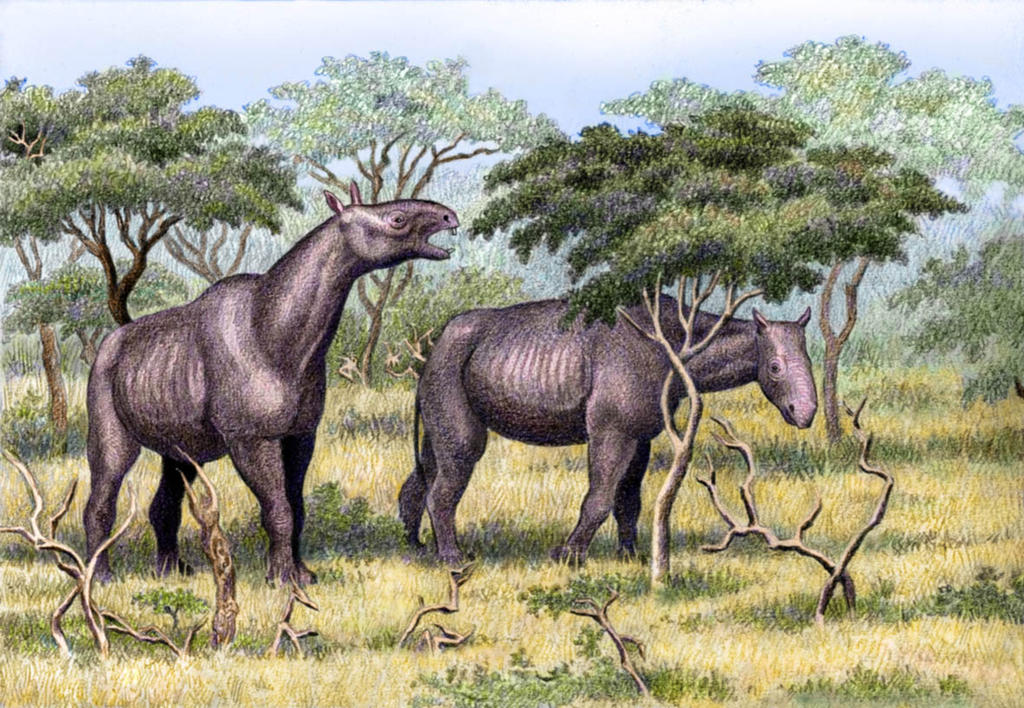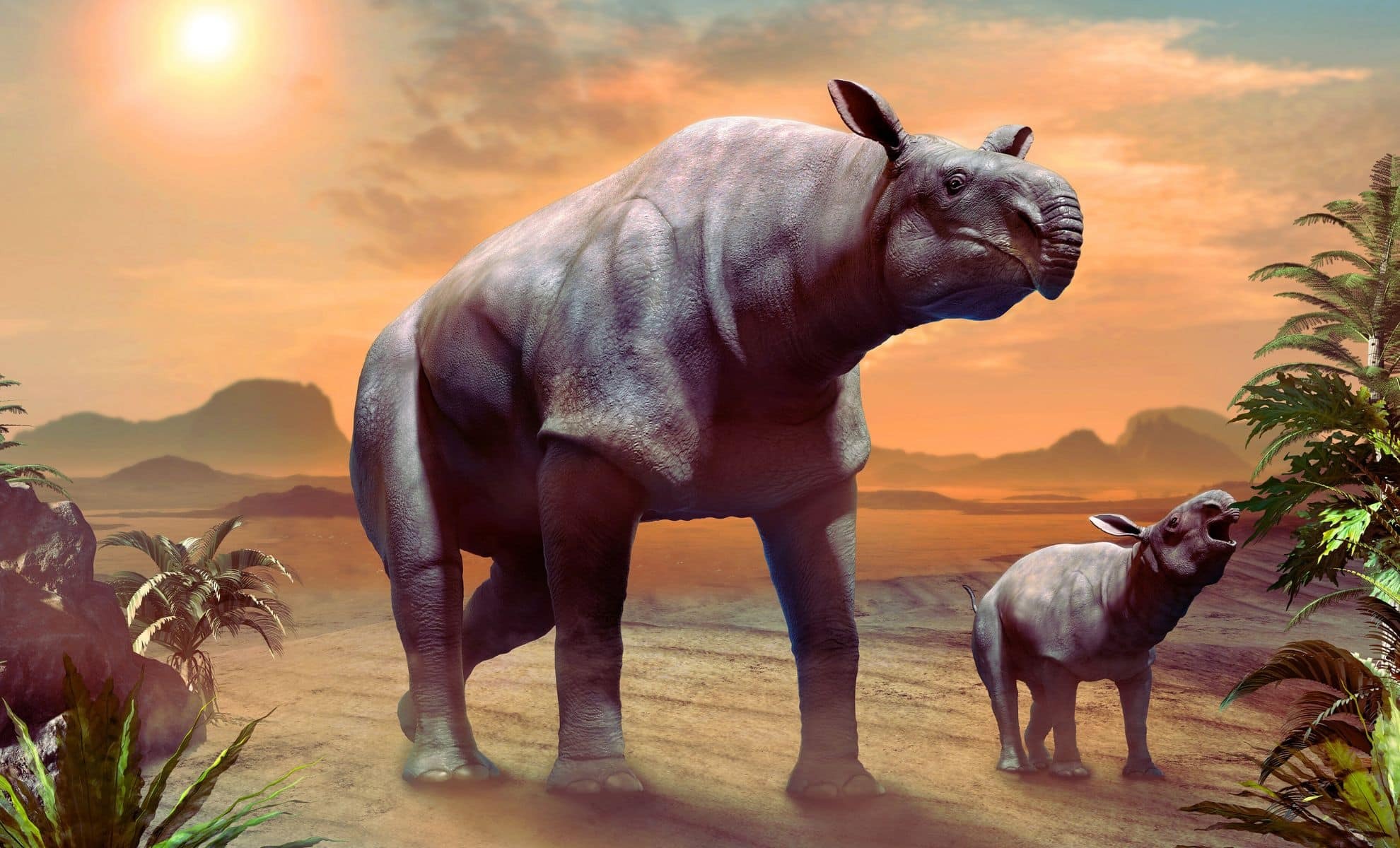In the grand story of life on Earth, few creatures have ever achieved the awe-inspiring scale of Paraceratherium transouralicum — the colossal, hornless relative of the rhinoceros that reigned as the largest land mammal to ever exist. Towering above the plains and woodlands of Central and East Asia some 34 to 23 million years ago, during the Oligocene epoch, Paraceratherium stands as a breathtaking symbol of evolution’s grandeur and the boundless potential of mammalian life after the extinction of the dinosaurs.
The Giant of the Age of Mammals

While the dinosaurs had vanished tens of millions of years earlier, the Oligocene was far from a quiet age. Mammals were diversifying, filling ecological niches left vacant by the great reptilian dynasties. Among these rising stars was Paraceratherium — an herbivorous titan whose sheer size would have rivaled even the mightiest of the Jurassic sauropods.
Standing approximately 4.8 meters (16 feet) tall at the shoulder, stretching over 8 meters (26 feet) in length, and weighing between 15 to 20 tons, this animal was as long as a bus and as heavy as four African elephants combined. Despite its enormous bulk, Paraceratherium was built for a surprisingly mobile lifestyle, traversing vast territories in search of food and water.
Anatomy of a Titan

Unlike its modern relatives, Paraceratherium lacked horns, but its size alone rendered such weapons unnecessary. It had massive pillar-like limbs capable of supporting its immense frame, and its elongated neck and head allowed it to reach vegetation over 7 meters high. Its prehensile upper lip, much like that of modern rhinos or tapirs, was perfectly adapted for grasping leaves, twigs, and soft shoots from tall trees.
Its skull — over 1.2 meters (4 feet) long — housed strong jaw muscles and a set of large, grinding molars ideal for processing coarse vegetation. Despite its size, Paraceratherium’s body was relatively lean compared to elephants, a design that likely helped it conserve energy while supporting its towering height.
Paleontologists believe that the creature’s large nasal openings may have supported a short trunk or flexible snout, aiding in feeding. Its long limbs, while not built for speed, enabled it to cover great distances efficiently — a necessary adaptation for survival in the semi-arid landscapes of prehistoric Asia.
A Peaceful Giant

Paraceratherium was a browser, feeding primarily on leaves, soft stems, and shrubs. Fossil evidence from regions such as Pakistan, Mongolia, China, and Kazakhstan suggests it inhabited floodplains, open woodlands, and forest edges — areas rich in foliage but prone to climatic shifts.
Its immense size provided natural protection from predators, as few creatures would dare challenge such a behemoth. Even apex predators of the time, like Hyaenodon or early nimravids (saber-toothed cat relatives), would have posed little threat to a full-grown individual. The only true vulnerability for Paraceratherium may have been its offspring, which likely took years to reach maturity.
Evolutionary Roots and Discovery
Paraceratherium belongs to the Indricotheriinae, an extinct subfamily of hornless rhinoceroses that evolved in Asia during the late Eocene and Oligocene epochs. Its name, derived from Greek, roughly translates to “near the beast from the Indus River,” reflecting the region where its fossils were first discovered.
Early paleontologists in the 20th century were astonished by its size and debated whether it represented a true rhinoceros or a distinct branch of giant perissodactyls (odd-toed ungulates). Over time, discoveries across Central Asia — particularly in Mongolia and China — helped scientists piece together the full picture of this extraordinary animal.
The most complete remains were found in Baluchistan, Pakistan, revealing much about its posture, movement, and proportions. These discoveries painted a portrait of a creature that, despite its immense mass, was graceful, slow-moving, and remarkably well adapted to its environment.
Life on a Changing Planet

The Oligocene epoch was a time of global transition. Cooling climates, shrinking forests, and expanding grasslands began reshaping ecosystems across the continents. For Paraceratherium, these shifts meant constant migration in search of food and water — journeys that may have stretched for hundreds of miles.
As the climate grew increasingly arid and grasslands replaced woodlands, the giant browsers found themselves struggling to adapt. By the Miocene epoch, about 20 million years ago, Paraceratherium had vanished — a victim of ecological change and declining food sources.
The Legacy of the Titan
Despite its extinction, Paraceratherium’s legacy endures as one of evolution’s most astonishing experiments in size and scale. It represents the zenith of mammalian gigantism, a reminder of the evolutionary pathways life can take when freed from the shadow of dinosaurs.
Its existence challenges scientists to reconsider the limits of biology — how terrestrial mammals could reach such extraordinary sizes without collapsing under their own weight, and how ecosystems sustained creatures of such vast appetite and range.
Fossils of Paraceratherium continue to inspire fascination not only among scientists but also artists, writers, and enthusiasts who seek to imagine what it might have been like to stand in its presence — to see this hornless colossus move with silent grace across the ancient plains.
A Glimpse Through Art
This awe-inspiring image, rendered by Gabriel N. U., captures that moment perfectly — the sheer majesty, strength, and serenity of a creature whose existence defies imagination. Towering against a backdrop of ancient forests, the Paraceratherium stands as both a symbol of nature’s grandeur and a solemn reminder of the impermanence of even the mightiest beings.
A Titan Remembered
In the story of life on Earth, Paraceratherium stands as a chapter of unmatched scale and quiet power — a creature that, though long gone, continues to evoke wonder. It walked a world still healing from the age of reptiles, reaching for the highest branches of a changing planet, embodying evolution’s unrelenting drive to explore new possibilities of form and function.
More than just a fossil, Paraceratherium is a testament to nature’s creative extremes — a silent, towering echo from an age when mammals ruled the Earth in forms as magnificent as any that came before.
Art by: Gabriel N. U.
Sources:
- Journal of Vertebrate Paleontology – “Revision of Indricotheriinae and the Gigantism of Paraceratherium” (2023)
- Natural History Museum London – Oligocene Giants Exhibition
- Smithsonian Paleobiology Research Bulletin – “Climate, Migration, and the Extinction of Paraceratherium”
